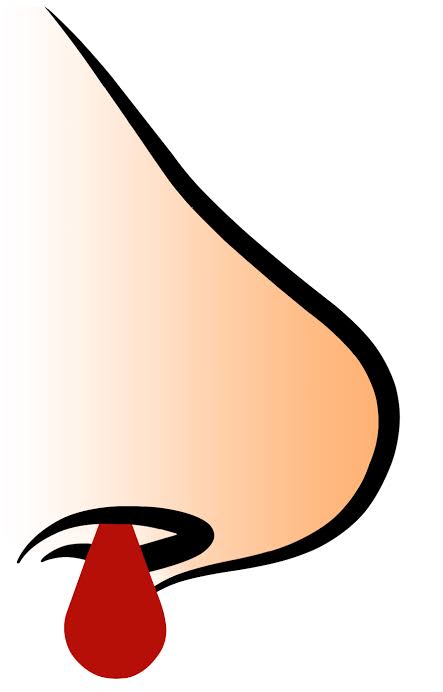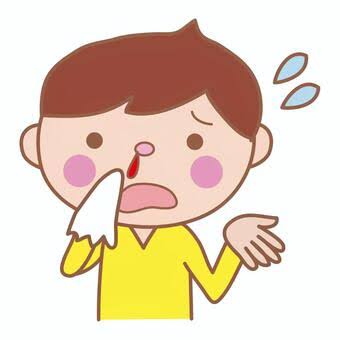Epistaxis, the medical term for nosebleeds, can be a disconcerting and uncomfortable sensation. They are not uncommon, particularly in older persons and children. When blood begins to flow from one or both nostrils, it is called epistaxis. This is frequently caused by microscopic blood vessels in the nasal passages rupturing. Nosebleeds can occasionally be more serious and need medical attention, even if they can be small.

The Types of Nose Bleeding
There are two main categories of nosebleeds: anterior and posterior nosebleeds.
The most prevalent and usually less serious kind of nosebleeds are anterior ones. They come from blood vessels around the nostrils in the front portion of the nose.
Nosebleeds in the posterior region are less frequent but typically more severe. They are most common in older persons and are caused by blood vessels at the back of the nasal passageways. They could be more difficult to manage and need medical care.
The Causes of Nose Bleeding
In order to control and avoid nosebleeds, it is imperative to comprehend their causes. Typical causes include some of the following:
1. Dry Air: Low humidity can cause the nasal passages to become parched, which increases the risk of bleeding.
2. Trauma: Ruptures in the blood vessels can result from accidents, wounds, or even from picking one’s nose.
3. Infections: Colds and sinusitis are examples of infections that can cause inflammation and raise the risk of nosebleeds.
4. Nasal Irritation: The nasal passages can become more sensitive due to allergies or exposure to irritating substances.
5. Underlying Health Conditions: Nosebleeds can be caused by underlying medical conditions such as liver diseases, bleeding disorders, and excessive blood pressure.
6. Medication: Certain drugs, notably blood thinners, increase the risk of bleeding.
Risk Factors of Nose Bleeding
There are few things that can make nosebleeds more likely. People can take preventative action by becoming aware of these risk factors. Typical risk factors include the following:
1. Age: People who are older and children are more prone to nosebleeds.
2. Arid Climate: Residing in an arid or dry climate raises the possibility of nosebleeds and nasal dryness.
3. Medical Conditions: Bleeding disorders, allergies, and hypertension are a few conditions that might aggravate nosebleeds.
4. Medication: Antihistamines, nasal sprays, and blood thinners can all raise the risk of nosebleeds.
Signs and Symptoms of Nose Bleeding
Recognizing nosebleed symptoms and signs is crucial for prompt response. Typical indications consist of:
– Blood seeping from one or both noses
– Cotton balls or tissues saturated in blood
– A metallic aftertaste in the mouth
– Pain, discomfort, or a pressure-like sensation in the nose
– In extreme situations, trouble breathing or swallowing
Investigations of Nose Bleeding
When nosebleeds become severe or regular, medical examinations can be required. Typical diagnostic examinations and research projects comprise:
1. Physical Examination: A medical professional will examine the patient’s throat, nose, and overall health.
2. Blood Tests: These tests can be used to determine the presence of underlying diseases such as infections or bleeding problems.
3. Nasal Endoscopy: An endoscope can be used to look for anomalies in the nasal passageways.
4. Imaging Studies: To find structural problems in the nasal passageways, an MRI or CT scan may be advised in some circumstances.
Differential Diagnosis for Nose Bleeding
Distinguishing between the numerous possible causes of nosebleeds is crucial for effective management and treatment. The following illnesses are a few that can resemble or exacerbate nosebleeds:
1. Sinusitis: When there is sinus inflammation, particularly when there is nasal discharge and congestion, nosebleeds may result.
2. Nasal Polyps: By irritating the nasal lining, these benign growths can raise the risk of bleeding from the nose.
3. Hypertension: Blood vessels in the nose might burst due to high blood pressure, which can result in nosebleeds.
4. Leukemia: An uncommon but dangerous disease, leukemia can cause nosebleeds that do not seem to go away.
5. Inherited Bleeding Disorders: Frequent nosebleeds can result from illnesses such as von Willebrand disease.
General Management of Nose Bleeding
Here are some crucial actions to do in order to manage nosebleeds:
1. Remain Calm: Anxiety might make things worse. Urge the person who is bleeding from the nose to stay composed.
2. Tilt Your Head Forward: This reduces the chance of choking and nausea by stopping blood from going down your throat.
3. Pinch the Nostrils: Breathe through your lips while gently pinching the soft area of your nostrils together. Maintain this posture for ten to fifteen minutes.
4. Apply Cool Compress: To assist constrict blood vessels and lessen bleeding, place a cool, damp cloth over the nose or on the back of the neck.
5. Avoid Irritants: Steer clear of things that could aggravate the disease, such as dust or tobacco smoke.
6. Keep Nasal Passages Moist: You can preserve moisture in your nasal passages by using a humidifier or saline nasal spray.
General Prevention of Nose Bleeding
Preventing nosebleeds is vital, especially for people who encounter them frequently. The following actions can lower the likelihood of nosebleeds:
1. Use a Humidifier: A humidifier can assist maintain nose moisture, especially in the winter when the air tends to be dryer.
2. Saline Nasal Spray: Using saline nasal spray on a regular basis helps keep the nasal passages from drying out.
3. Do not Pick Your Nose: Advise kids and adults not to pick their noses.
4. Remain Hydrated: Eating enough water aids in maintaining proper hydration of the body and nasal passages.
5. Handle Allergies: If allergies are a problem, think about using allergy pills or making your house allergen-proof.
6. Avoid Irritants: Stay away from irritants including tobacco smoke, aerosol sprays, and strong scents that can irritate the nasal passages.
Homeopathy for Nosebleeds
A distinct approach to treating nosebleeds is provided by homeopathy, which places an emphasis on the constitution and general health of the patient. The exact symptoms and the underlying cause of the nosebleeds are taken into consideration when selecting homeopathic medications. The following are some typical homeopathic treatments for epistaxis:
1. Aconite: Used to treat unexpected, vivid crimson nosebleeds that are frequently brought on by cold exposure or fear.
2. Phosphorus: Recommended for nosebleeds that bleed for a long time and are frequently accompanied by weakness and a hot feeling in the nose.
3. Ferrum Phos: Suggested for nosebleeds that happen frequently and have a propensity to reoccur because of irritation or inflammation.
4. Hamamelis: Useful for nosebleeds with dark, venous bleeding, often seen after injury or strain.
5. Natrum Mur: Medicated for emotional stress-induced nosebleeds that have a propensity to retreat into their own world.

Homeopathy: The Healer
Epistaxis, often known as nosebleeds, is a frequent disorder with a variety of risk factors and causes. They are efficiently manageable with conventional medical methods, such as preventative lifestyle modifications. In certain situations, people could look into complementary therapies like homeopathy, which provides a wholistic approach to health and might be helpful for those in need of customized care.
Before starting any homeopathic medication, it is crucial to speak with a licensed healthcare provider to make sure it is safe and suitable for your particular situation. When combined with conventional medical care, homeopathy can offer a thorough and individualized method of treating and preventing nosebleeds, improving general health and quality of life.
Reach out to us for a Consultation.
This blog is for information purposes. It’s crucial to note that while homeopathy is a centuries-old practice with many adherents worldwide, always consult a qualified homeopath or medical professional before initiating any treatment.
For any queries, reach out to us at contact@homeopathic.ai





